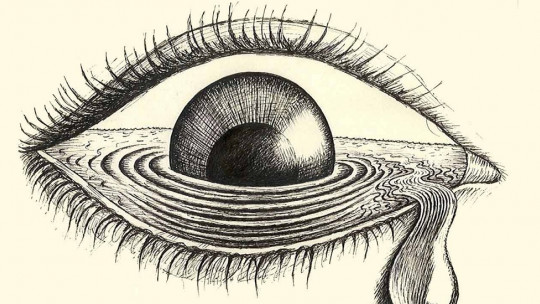
The multicausality of the phenomenon of the suicidal act suggests that prevention strategies must also be multiple and must be applied together to achieve effectiveness. There is no univocal solution in suicide prevention and the best approach is a multidisciplinary approach, and at the same time from an individual and public health level. Since it is a problem with such an incidence and which, in turn, causes so much pain, at Psicología-Online we wanted to dedicate an article to suicidal behavior and its prevention
The approach to suicide prevention at the individual level emphasizes the diagnosis, treatment and monitoring of mental disorders (depression, schizophrenia, drug dependence and stress).
Tips for suicide prevention
The public health approach has strategies for suicide prevention:
- Carry out mental health campaigns, screening in schools, early diagnosis of drug abuse, depression and stress.
- Carry out specific suicide prevention programs and avoid the stigmatization of suicidal behavior.
- Control access to the means to commit suicide. There is evidence that controlling gun ownership reduces the suicide rate, as does controlling the use of medications and pesticides. Other measures may include fencing high-rise bridges and fencing windows in tall buildings.
- Support for the media so that information is adapted to prevention: Training of journalists in the management of information on suicidal behavior, since the media can play a proactive role in helping to prevent suicide.
The prevention of suicidal acts includes a series of activities ranging from the provision of the best possible conditions for the education of children and young people, the effective treatment of mental illnesses and the control of risk factors.
Although risk factors have been identified for the person at high risk for suicide, there is no definitive measure to prevent suicide and very few people with these factors will commit suicide.
Efforts to prevent suicide should be based on research, which shows which risk and protective factors can be modified and which groups of people are most appropriate for intervention (Public Health Service, 2001).
To prevent attempted and completed suicide, it is essential to know the risk factors, which are those that predispose them.
An appropriate dissemination of information and a social awareness campaign about the problem are essential elements for the success of prevention programs, but suicide prevention can be subdivided into three types:
- General prevention, which is the set of psychological, social, institutional support measures that contribute to citizens being in better conditions to manage stressful life events and mitigate the damage that they could cause.
The World Health Organization (2000) suggests some general measures to prevent suicide:
- Treat mental illnesses.
- Control gases from motor vehicles.
- Control domestic gas.
- Control possession of firearms
- Control the availability of toxic substances.
- Reduce sensational information in the media.
- Indirect prevention consists of the set of measures aimed at treating mental and behavioral disorders, physical illnesses that lead to suicide, crisis situations, reducing access to methods by which people can self-harm, etc.
Help Centers can offer confidential support to anyone who is distressed or desperate and may be experiencing suicidal feelings.
- Direct prevention constituted by those measures that help resolve suicidal ideas and thoughts through alternative solutions. The Practical Guides can help Primary Care healthcare providers detect and manage people with suicidal behavior and refer them for early assessment by mental health professionals.
And Self-Help Groups allow you to meet other people to share feelings and experiences, which can bring you comfort.
The prevention of suicidal acts is not an exclusive problem of mental health institutions, but of the entire community, its organizations, institutions and individuals.
Early intervention in the person at risk of suicide is necessary and suicide threats and attempts always have to be taken seriously, because almost a third of people who attempt suicide try again within a period of one year and about 10% of those who threaten or attempt suicide end up carrying out the act (Pérez Barrero and Mosquera, 2002).
As a preventive measure, it is necessary to have human resources where listening and understanding work is carried out to prevent the person from committing suicide (hotline services), since a suicide threat or attempt should never be ignored.
Generally, a person with suicidal risk behavior is a very unhappy person who thinks about suicide because they do not have other ways to adapt to stressful life events.
The mental health approach and evaluation of the person with suicidal behavior is necessary and must be carried out immediately.
Suicide risk assessment
The approach and evaluation of the person with suicidal behavior from mental health is necessary and It has to be done immediately
It is considered useful to know the ten common characteristics of every person with suicidal behavior to do what is appropriate at all times Shneidman (2001):
- The pain psychological is unbearable, Therefore, it must be reduced using understanding and listening, favoring any type of emotional expression that serves as an escape valve for that pain.
- It is advisable to take into account the frustration of psychological needs and accept these needs as real and be impartial.
- It must be given opportunity for the subject to express his situation and understand that for him the solution to the suicidal act is serious, so you can ask him if he has considered other solutions other than suicide and invite him to think about other alternatives and inform him that you will help him do so.
- It is necessary to provide emotional support.
- It is convenient recognize feelings of hopelessness and do not combat them with pessimistic expressions, since sometimes these symptoms respond to serious depression that is not modified with good intentions and advice.
- Given the ambivalence that the person may express, it is necessary to seek more positive alternatives and reinforce them.
- The constriction must be recognized early and explore other options that allow a broader vision of possible solutions to the problems.
- You should be alert about messages of suicidal intent, because they can be a prelude to suicidal behavior. Therefore, it is essential to ask about the presence of suicidal ideation or a plan.
- Given the possibility of a suicidal act, one must listen and act quickly, because in this condition the individual is at the limit of his or her possibilities to carry out the suicidal act, and it is necessary to restrict the methods by which the subject can harm himself.
- It is necessary to pay attention to the Personality traits of the person, since they can be revealed in the behavior during the interview, as well as their previous ways of reacting in critical situations.
The first psychological help is an immediate supportive intervention that aims to restore a certain emotional stability, and it can be done by a primary care doctor, psychiatrist, a psychologist, as well as a neighbor, a friend, a family member, or a study or work colleague. This first aid Matusevich and Pérez Barrero, 2009) may consist of:
- Listen empathetically, without criticism (no judgment, no questioning, no advice, no opinion).
- Create an environment of support, understanding and unconditional acceptance, accepting your feelings and the person at risk of suicide and showing interest in them.
- Ask open questions to facilitate the expression of feelings and thoughts and generate a climate of trust.
- Generate alternatives and strategies for the problems that arise without giving advice.
- Do not express confidentiality.
- Assess the suicidal danger and ask directly if necessary, you cannot ignore or not explore the suicidal danger.
- Make the practical and necessary decisions to protect the person at risk of suicide, being directive and involving family members and health care providers.
If the person has already made a suicide attempt, The first measure is to save your life, so you must rely on a doctor who evaluates the possible damage and imposes timely treatment to prevent future consequences. But if the subject is in a position to cooperate, communication must be facilitated with the intention of knowing what the motive was that explains said behavior (Maris, Berman and Silverman, 2000).
Some signs of a suicide attempt may be:
- Being able to rest from the burden of an intolerable situation.
- Express anger disagreement, frustration.
- Outbreak of a relevant psychiatric illness.
- Reaction to the loss of an emotional relationship.
- Emotional blackmail and demand for support.
- Attack others.
- Avoid physical pain or fatal illness
When there are indications of a suicidal act, it is advisable to try to find out if there is an immediate risk of suicide, asking if they intend to do it or have only thought about it, if they have a plan and when they would carry it out. Most of the time there is no imminent risk of suicide, but if there is, don’t hesitate to call the police.
In this situation it is convenient (Ancinas y Ancinas and Muñoz Prieto, 2008):
- Do not leave them alone. The person should not be left alone, even if telephone contact has already been made with an appropriate professional. They need to feel accompanied.
- Don’t make him feel guilty.
- Don’t dismiss his feelings by pointing out that. that suicidal thoughts and desires are always temporary.
- Express support and understanding. And allow the expression of feelings.
- Avoid access to instruments that could be used to carry out the suicidal act.
- Support you to be treated by a mental health professional or a health center.

Therapies to prevent and treat suicidal crises
There is no single therapeutic approach to the suicidal act but the beneficial effects of pharmacological therapy and cognitive-behavioral therapy or the combination of the two.
Cognitive behavioral therapy It is intended to modify behaviors and thoughts and uses techniques such as assertiveness, relaxation, cognitive restructuring, problem solving, social skills training and contingency management, which can reduce depression, anxiety, and lack of social skills.
Suicide causes suffering in the victim but also in those close to him (Jacobsson and Renberg, 1999).
Suicide entails emotional, social, and sometimes economic devastation for family and friends. Both a suicide attempt and a completed suicide have emotional consequences for anyone involved. The person’s family, friends, and doctor may feel guilty, ashamed, and remorseful for not being able to prevent the suicide.
Family and friends of the person who commits a suicidal act may experience a wide range of conflicting emotions about the deceased, feeling both intense emotional pain and sadness over the loss, and anger against the deceased because the person abandoned them. suicide of a loved one, tends to experience complicated grief in reaction to that loss with symptoms such as intense emotions, intrusive thoughts about the loss and a feeling of isolation and emptiness (Sáiz Martínez, 2005).
After the suicide of a loved one, it may be common for family and/or friends to feel ashamed, which leads to not wanting to talk about the circumstances of the death. You can also give yourself a guilt The feeling of guilt is normal after a death of this nature. One reproaches oneself for not having realized how bad he was… and there is usually a strong feeling of not having known how to take care of him. You may also feel rage and anger towards the person who committed suicide and towards all those who may have contributed directly or indirectly to carrying out this action.
So when you lose someone to suicide, a wide variety of feelings can appear, including guilt, resentment, confusion, remorse, and worry about unresolved problems.
Many will feel guilty thinking that they have failed to support you or they will reproach themselves for not realizing it.
The family member or friend must be able to express their pain and feelings, as it relieves suffering and helps you move forward.
It is possible that you will never be the same as before, because there are things that you never completely overcome and you have to learn to live with that.
You have to be able to grieve to overcome the loss of a loved one; And so that it does not become a complicated grief, it is necessary to go through an emotional process that allows you to accept the death of your loved one, assume the wear and tear and emotions that this death generates, adapt to the absence of your loved one, and learn to live without them. and internalize death as something more that is part of life (Rocamora Bonilla, 2000).
It is convenient to tell children the truth. Not knowing what has happened will not do them any good and if they find out from someone else they could lose trust in you.
When someone they love commits suicide Children may feel the following: (Maris, Berman and Silverman, 2000):
- They may think that the person who committed suicide did not love them and feel abandoned.
- They may think that they are guilty of suicide, especially if in some moment of anger they wished that person to die.
- They may be afraid of dying too.
- They may feel sadness, confusion, loneliness.
- They may feel embarrassed to see other people or go back to school, because they feel different.
- They may feel anger towards the suicidal person or towards everyone.
- They can deny what happened or pretend that nothing has happened.
- They may enter a state of emotional insensitivity.
It is advisable to explain to children that people die in different ways: some from illness, others from a car accident, and others kill themselves. They must be told that despite the suicidal act, their father or mother loved them very much, but that his illness prevented them from doing so.
On the other hand, it is advisable that the media (WHO, 2000) observe some conditions to favor prevention:
- Have authentic and reliable sources.
- Avoid expressions of a suicide epidemic.
- Reporting suicide as something inexplicable or simplistic.
- Describe the suicidal act as a method of coping with problems.
- Praise suicidal behavior as having values.
- Describe the impact and suffering on family members.
This article is merely informative, at PsychologyFor we do not have the power to make a diagnosis or recommend a treatment. We invite you to go to a psychologist to treat your particular case.
If you want to read more articles similar to Suicidal behavior and its prevention: strategies and therapies we recommend that you enter our Clinical Psychology category.








